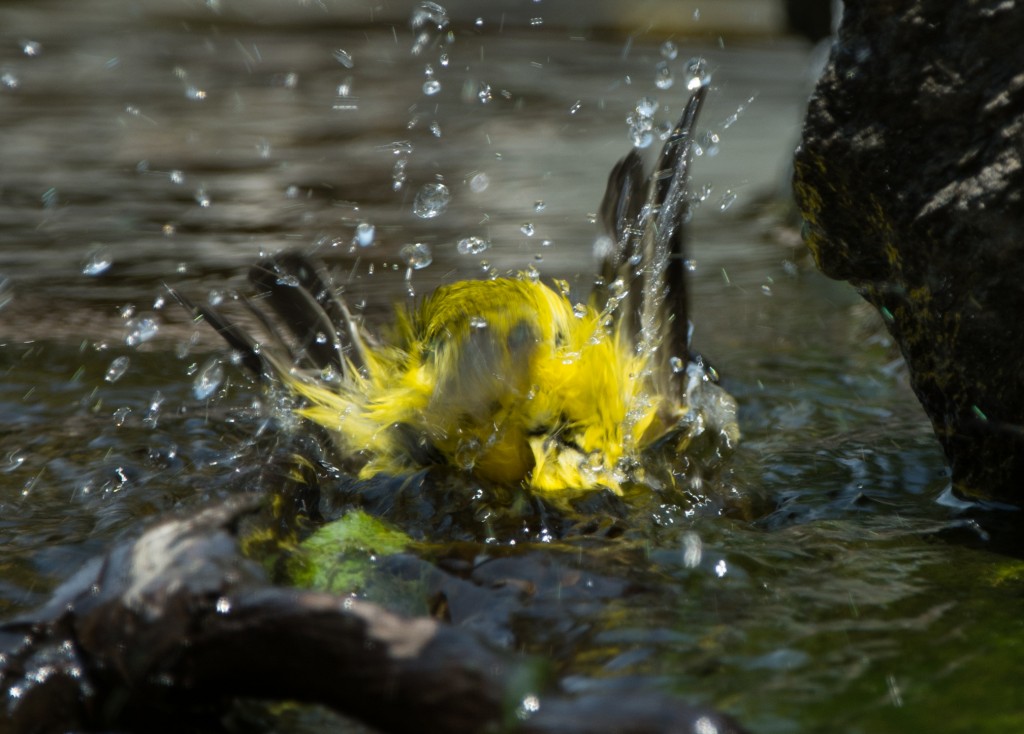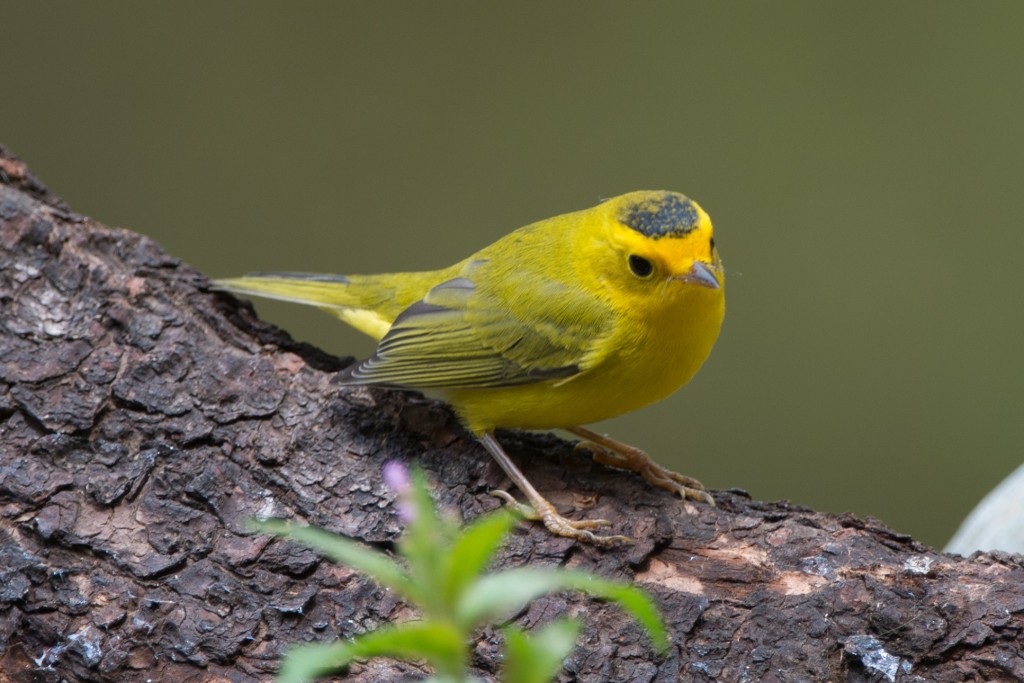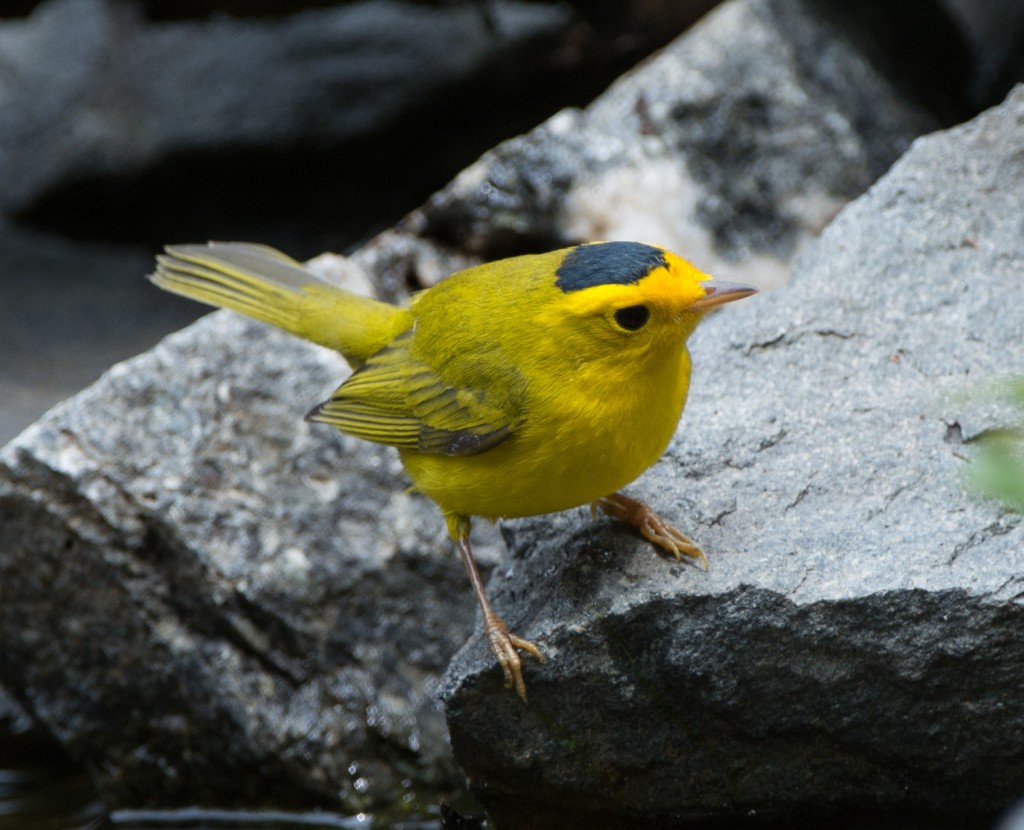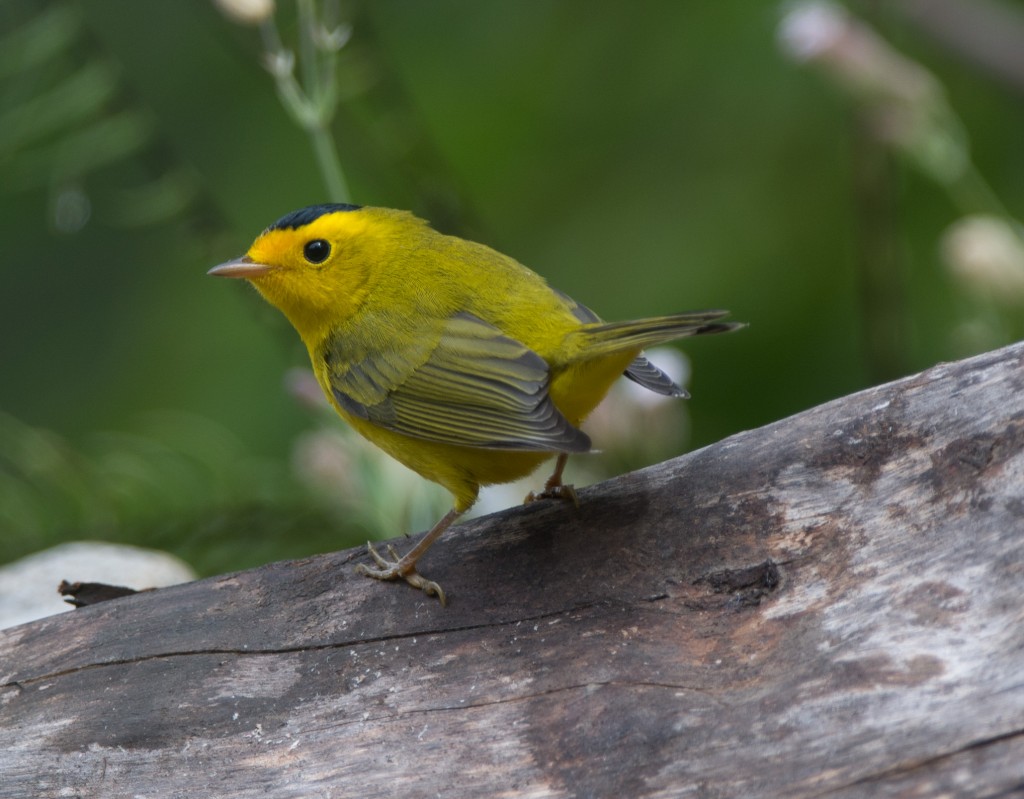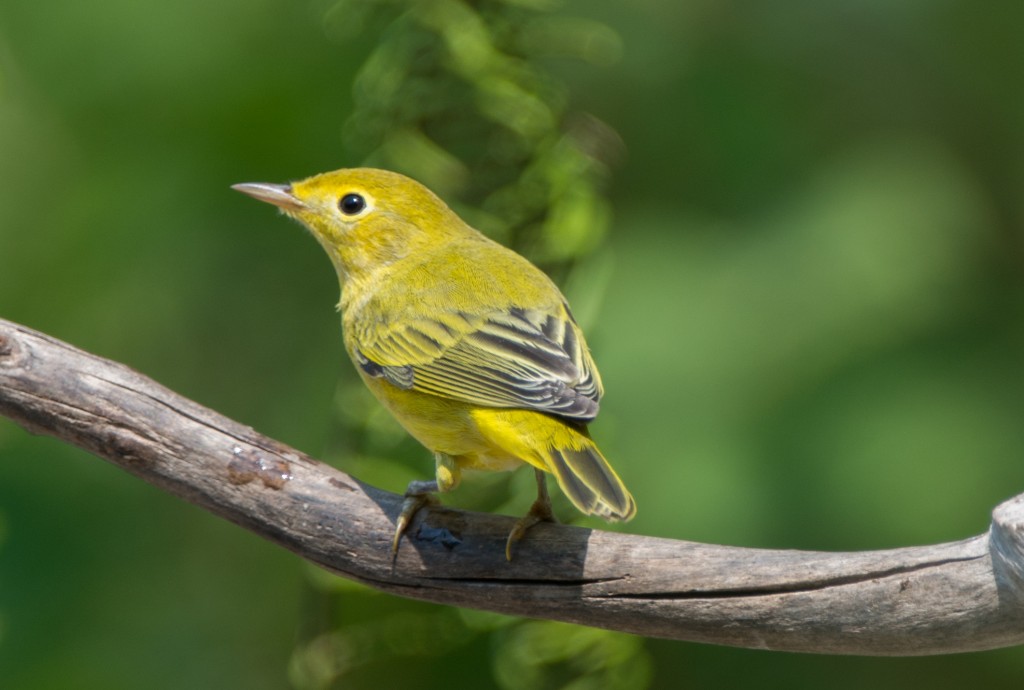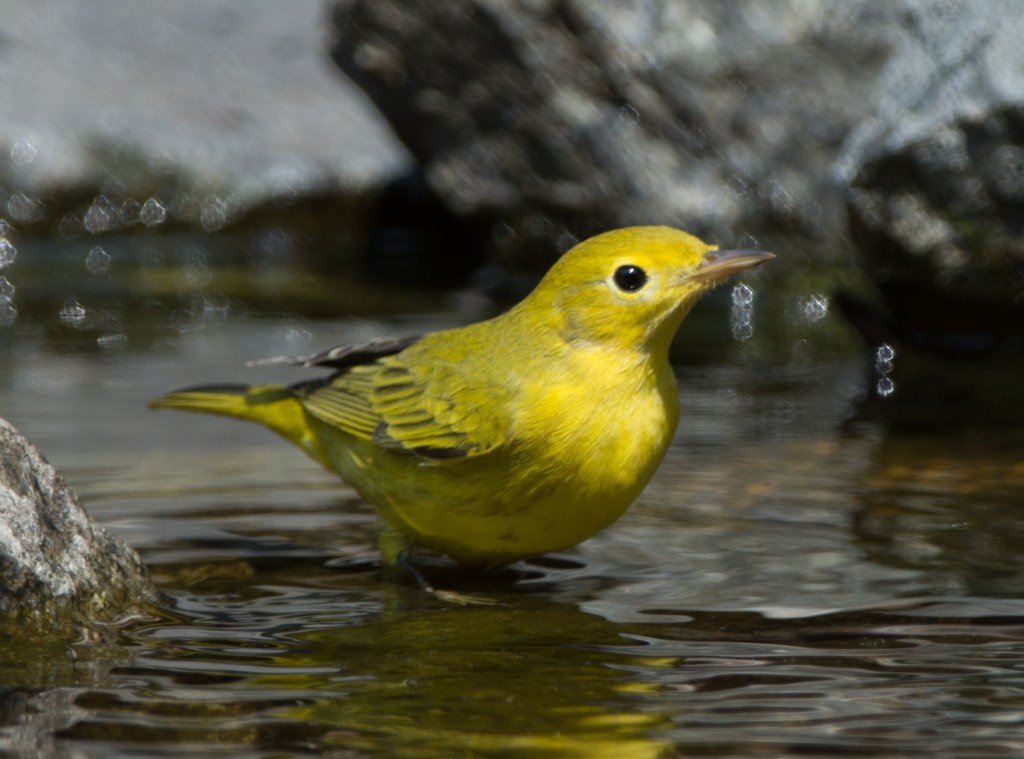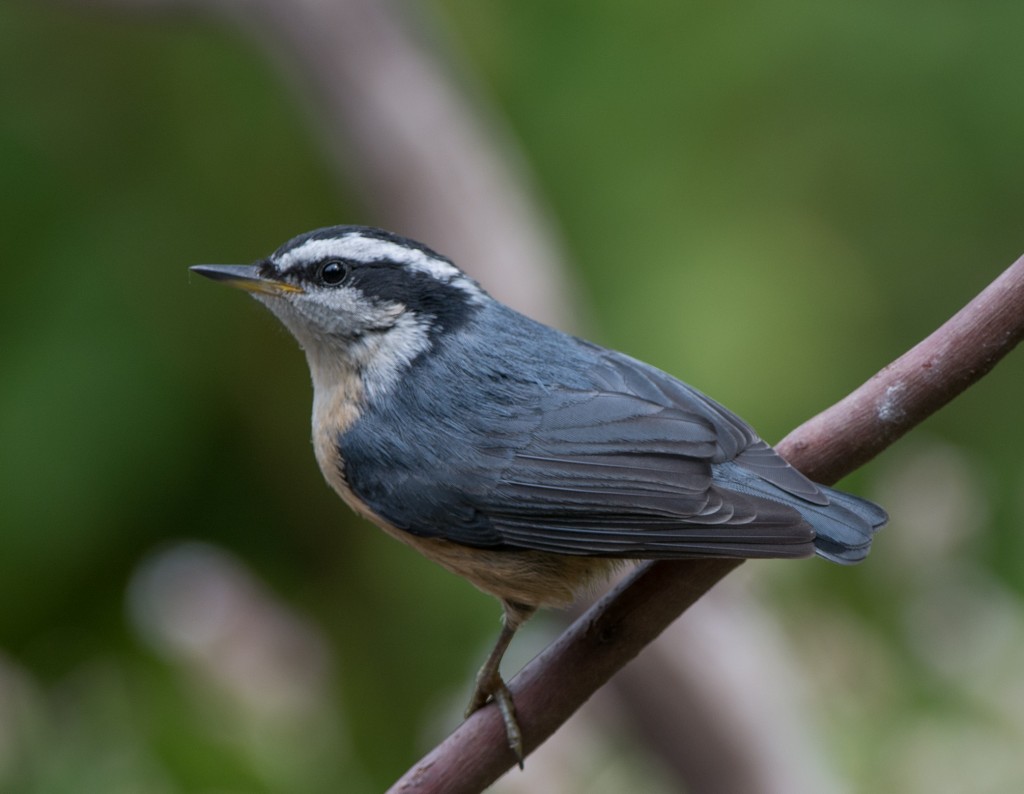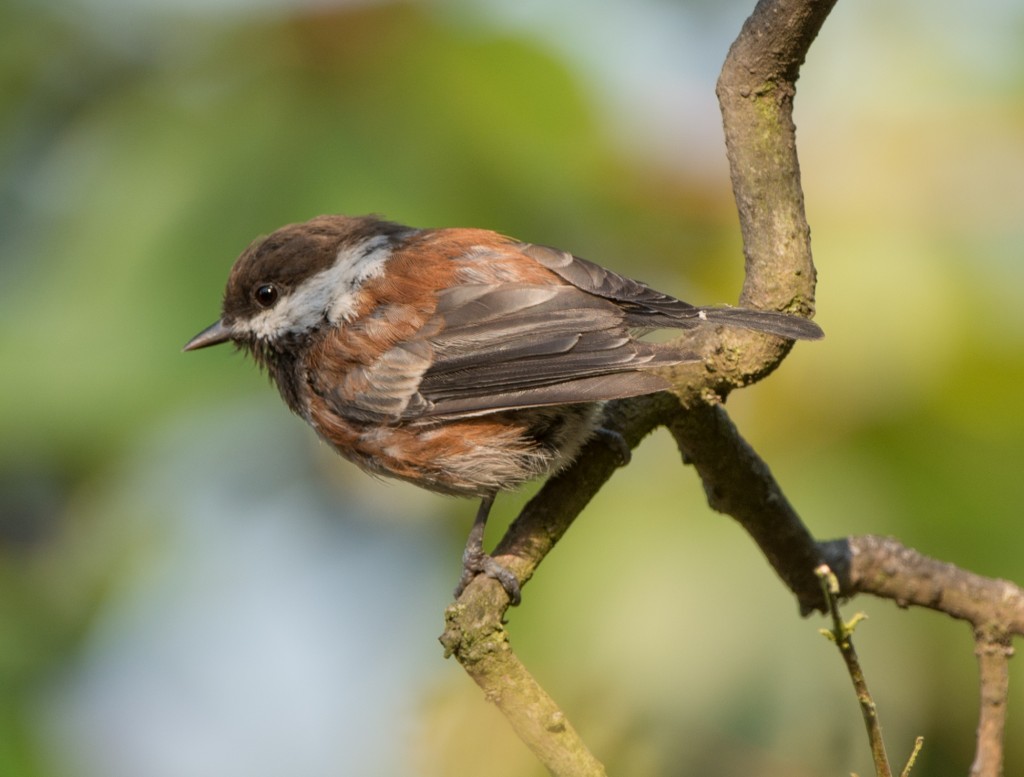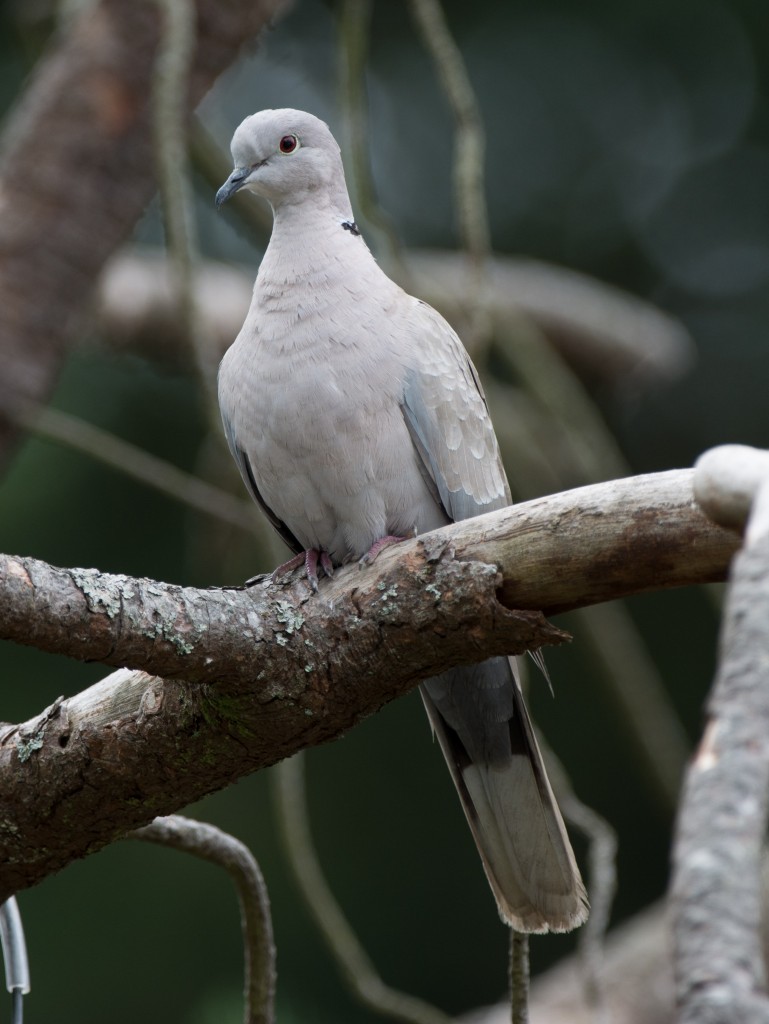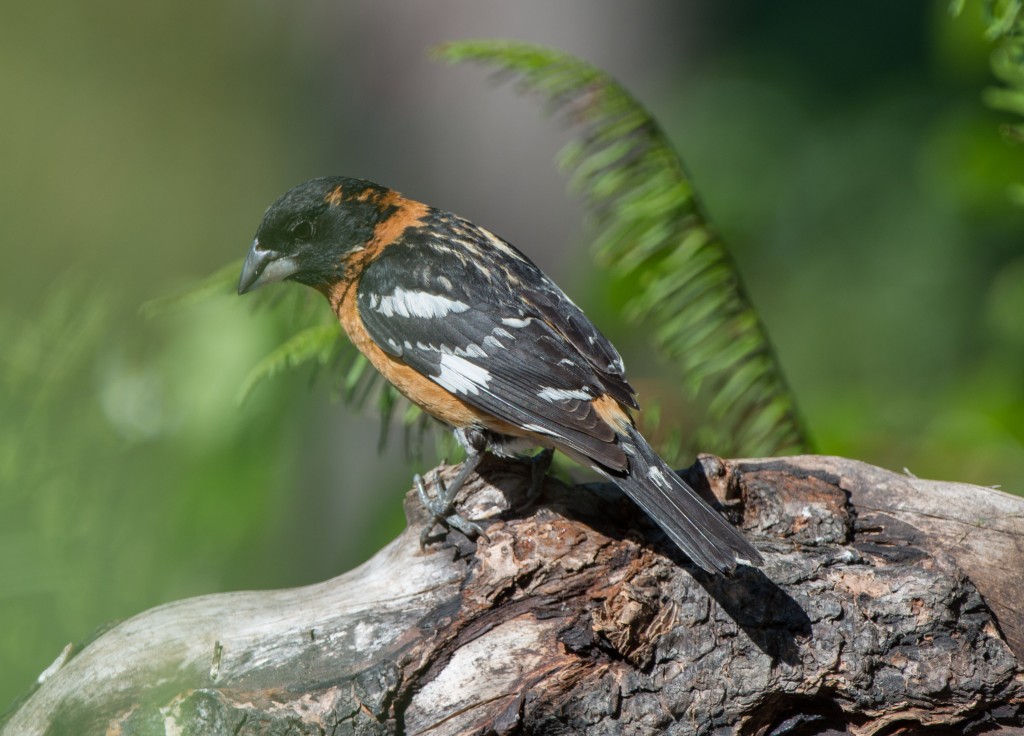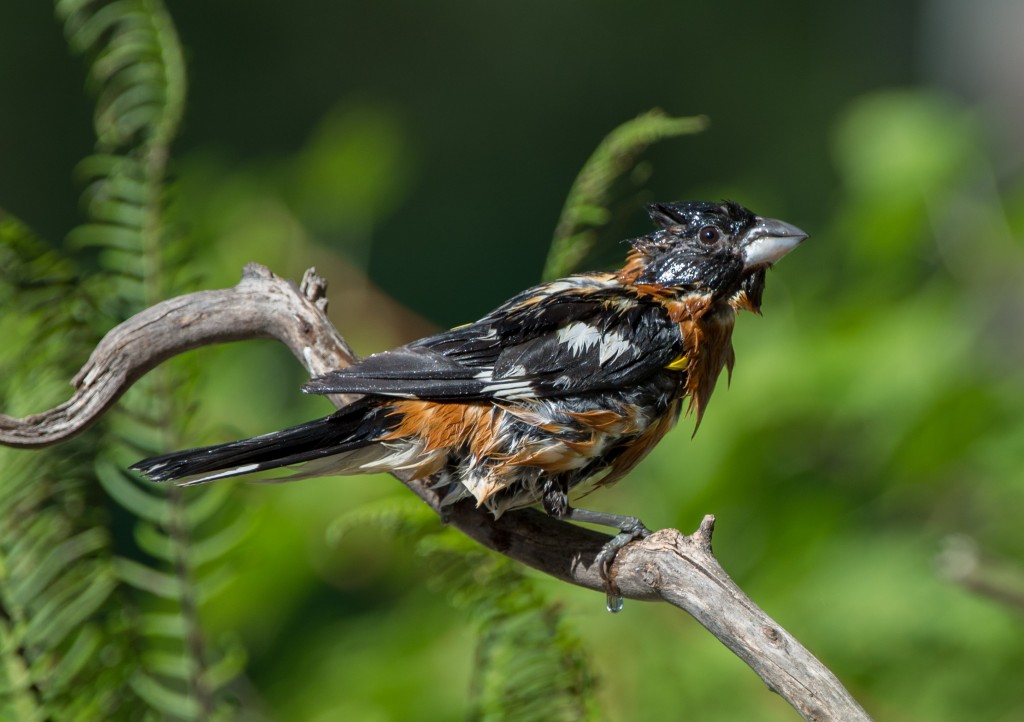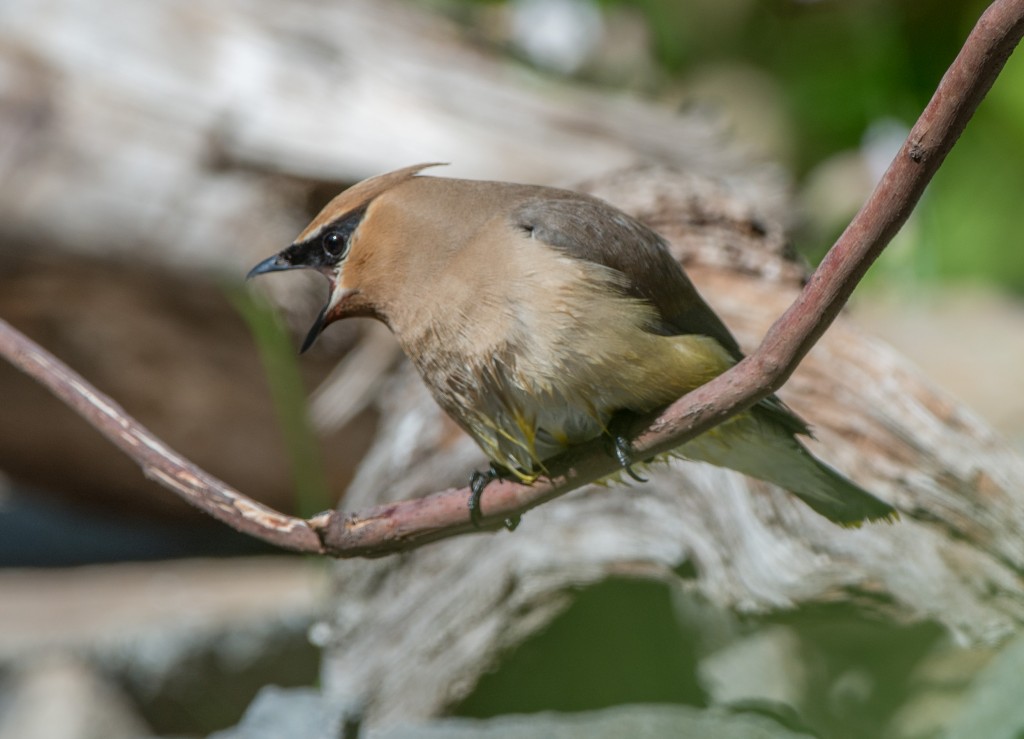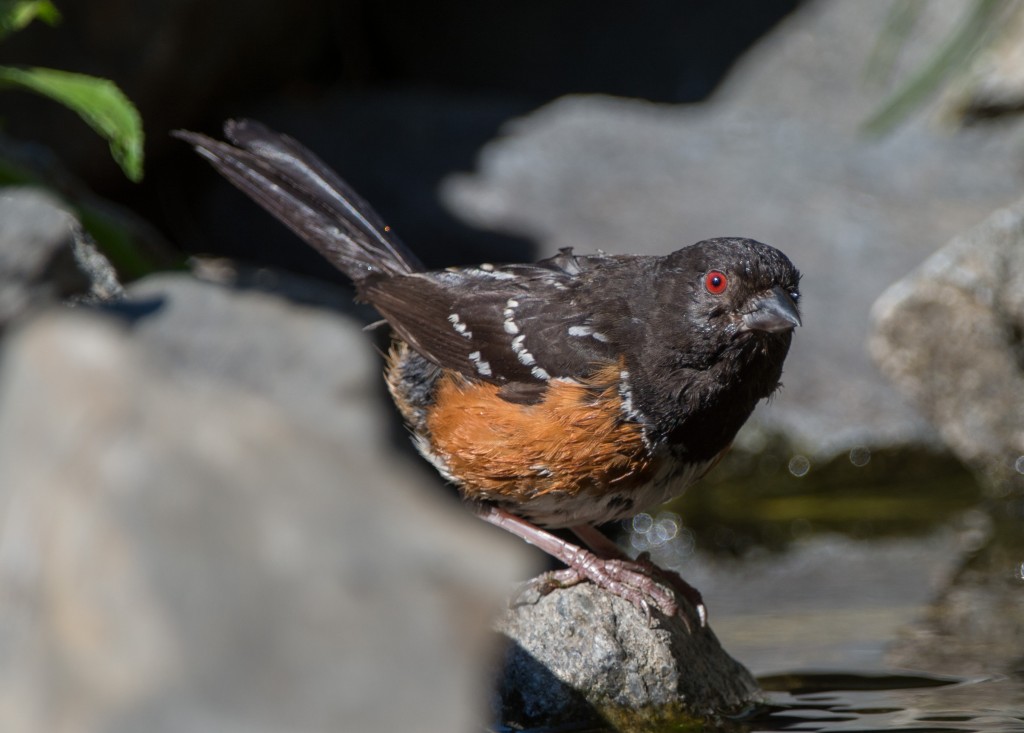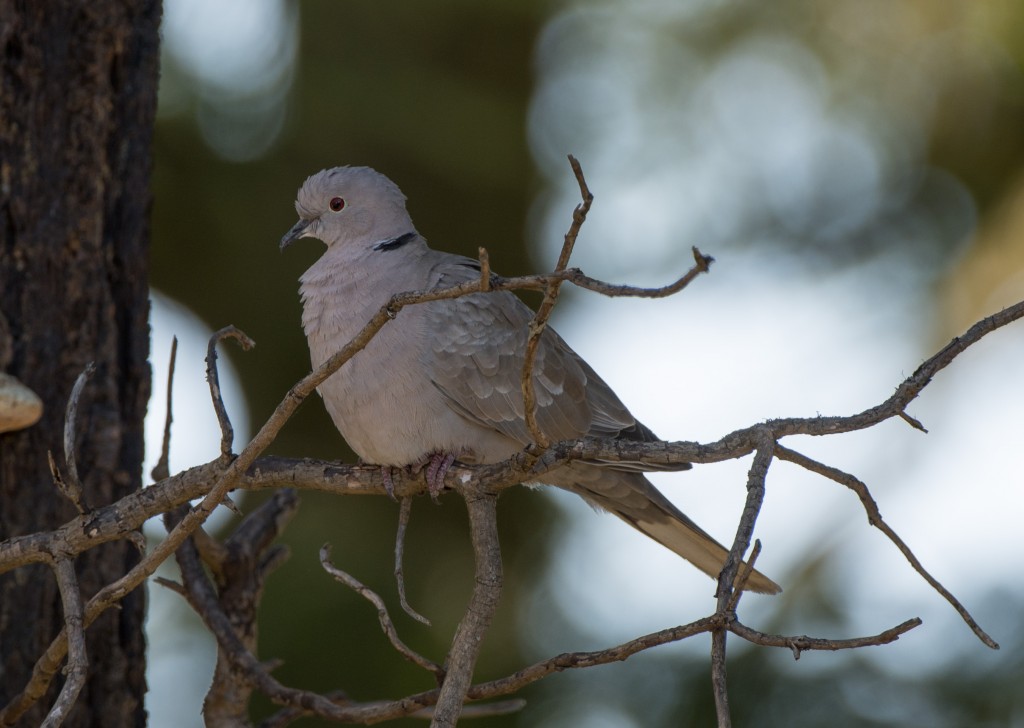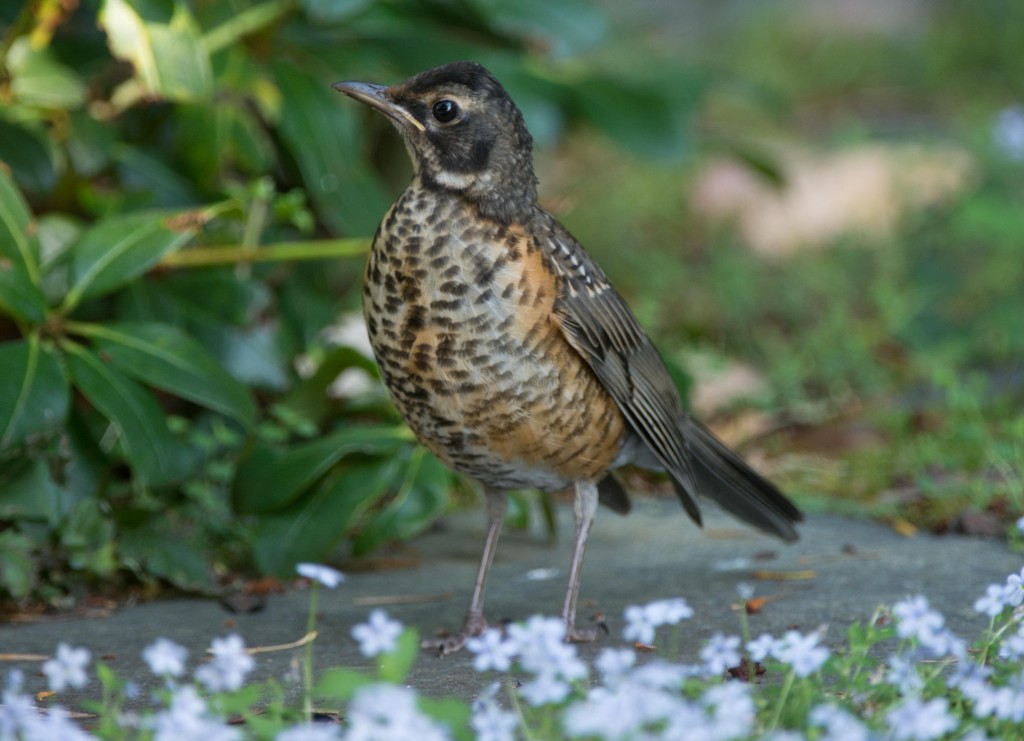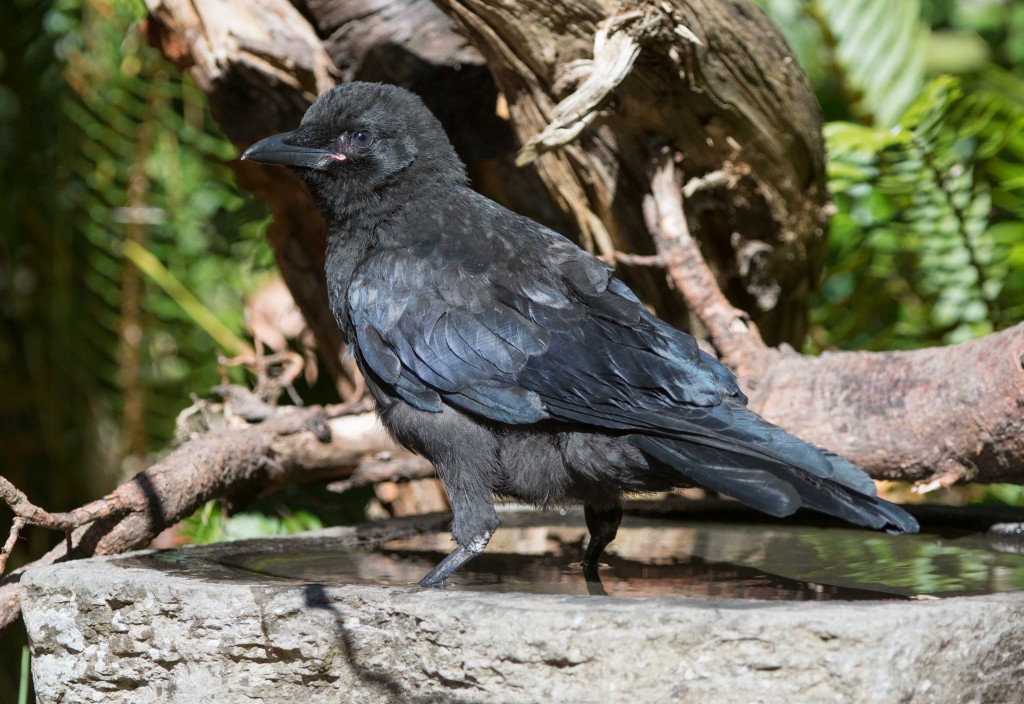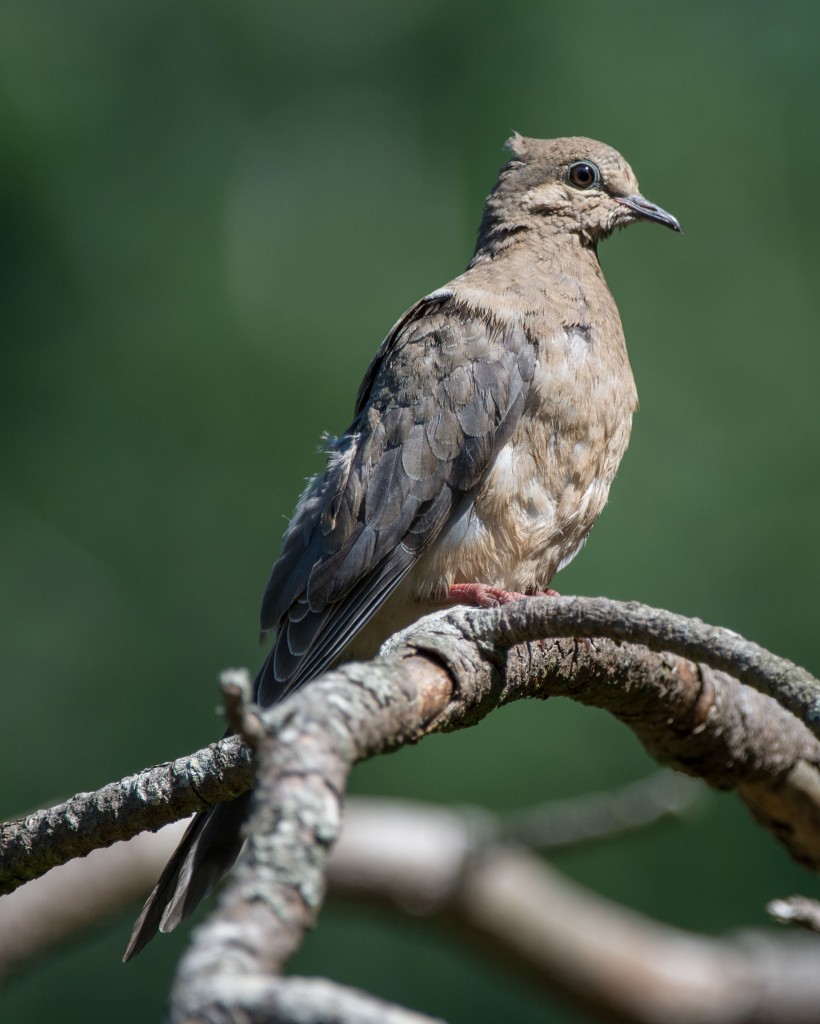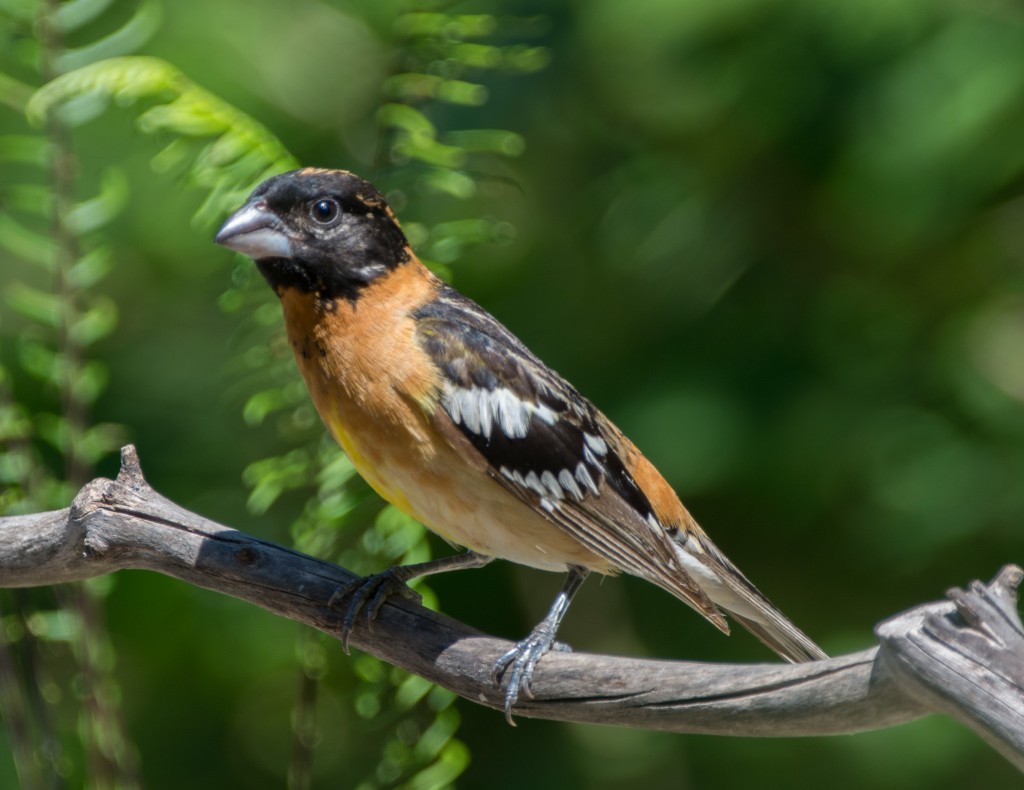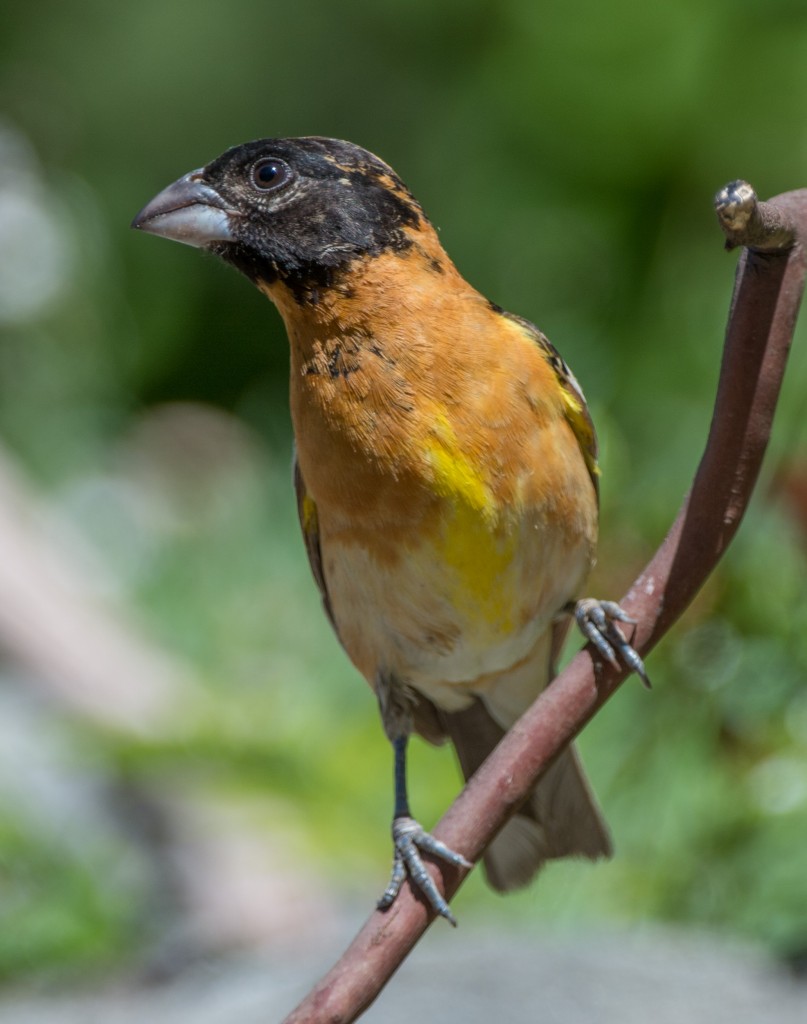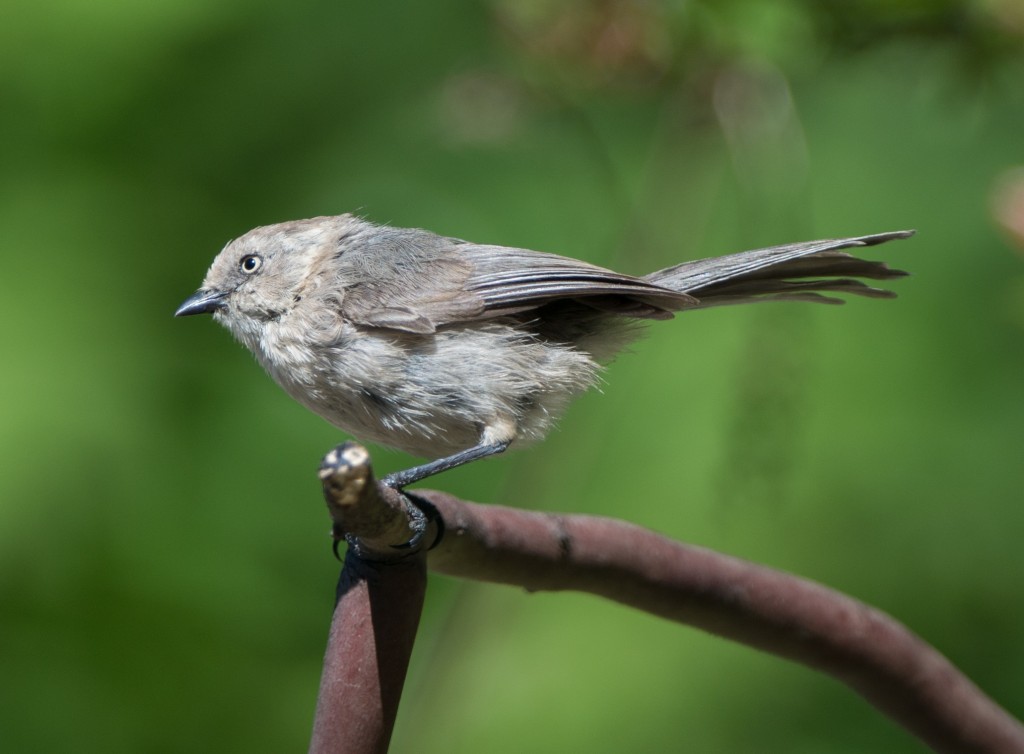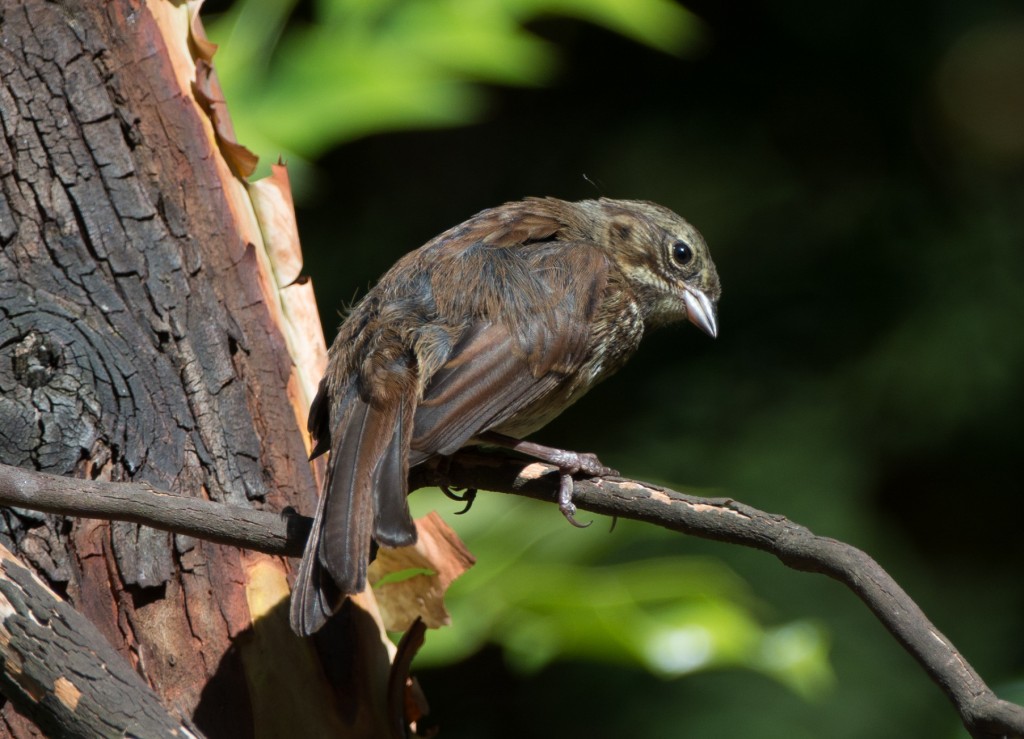Exactly a week ago, with guests from Texas in the yard birding with me, I finally had the opportunity to photograph a female Red-winged blackbird. The birds nest in the wetland below us but during the breeding season make quick forays to the yard to eat seed. The practice allows them to obtain food without being away from the nest for longer periods of time for hunting purposes.
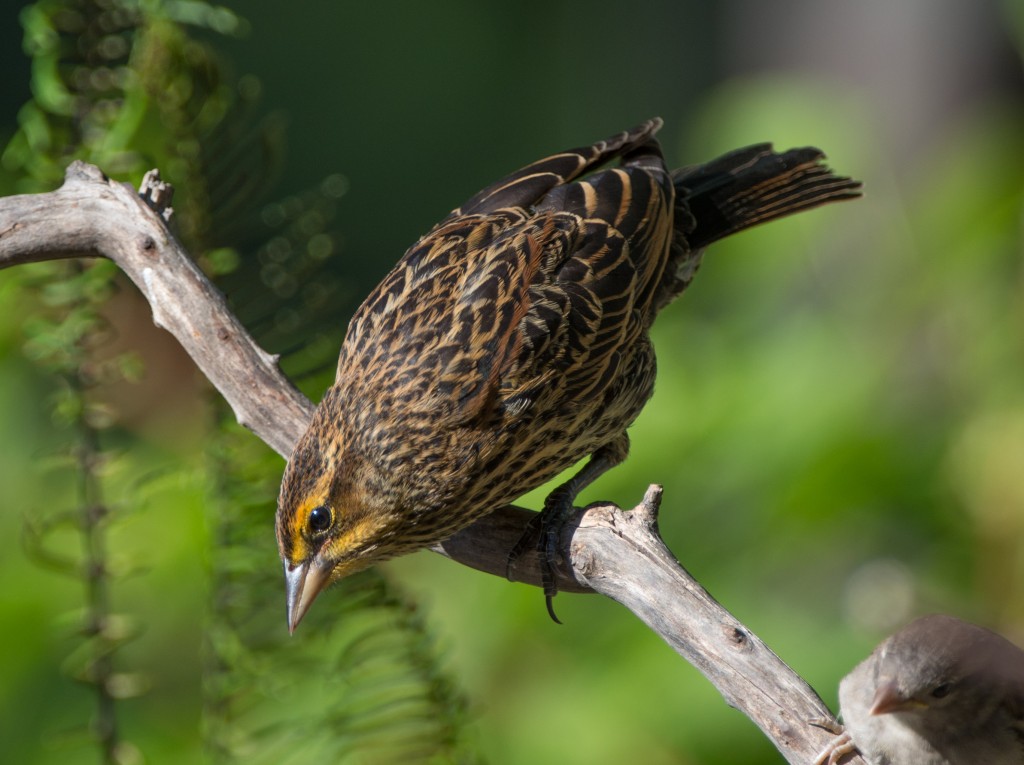
Female Red-Winged Blackbird
The birds finally managed to salvage my birding photography day on Sunday, July 28. I made my first foray into the yard in the early afternoon and sat for about 1.5 hours with nothing to show for my time except a male House finch and too many House sparrows.
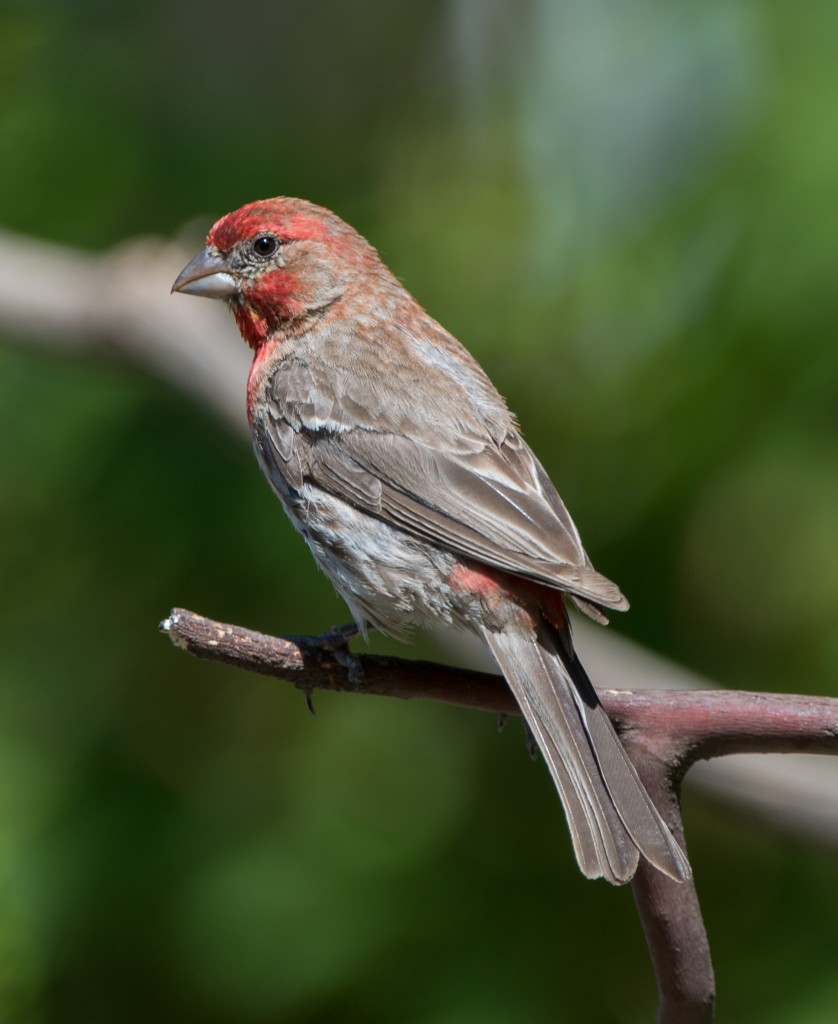
Male House Finch
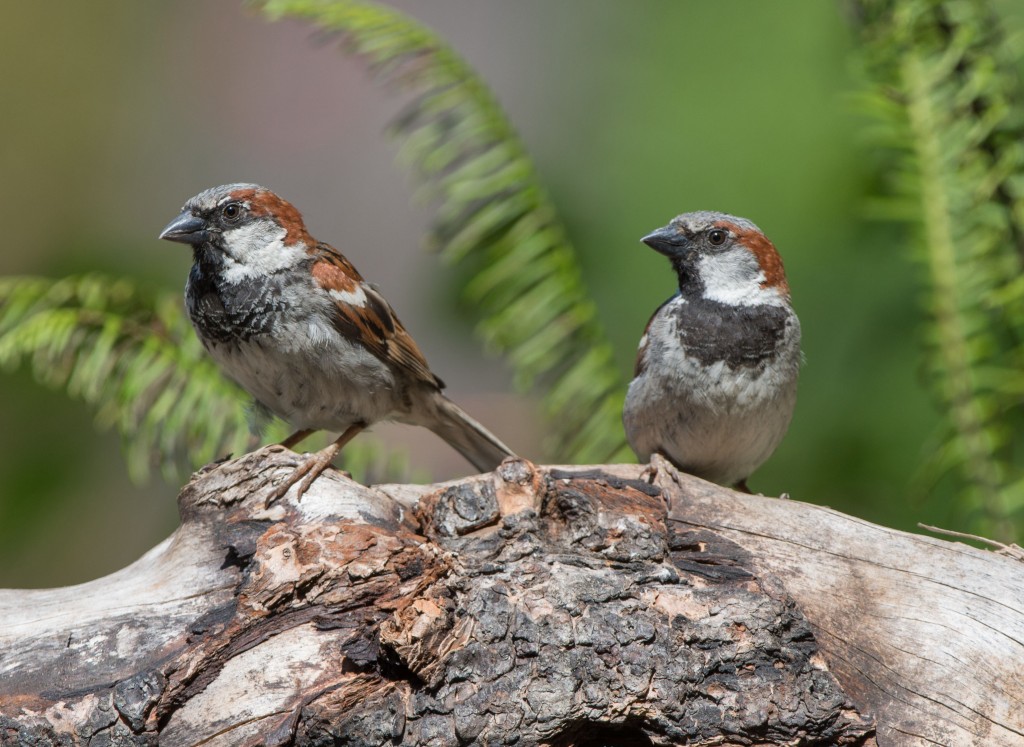
Male House Sparrows
I returned to the yard a couple of hour later and it didn’t appear that things were going to be any better, but after about 15 minutes I had a flurry of activity beginning with one of the Eurasian Collared doves (mentioned in previous posts), flying down from a tree almost directly at me. It flared just above the watercourse and veered into the lower branch of a madrone tree where it played hide-and-seek for about five minutes.
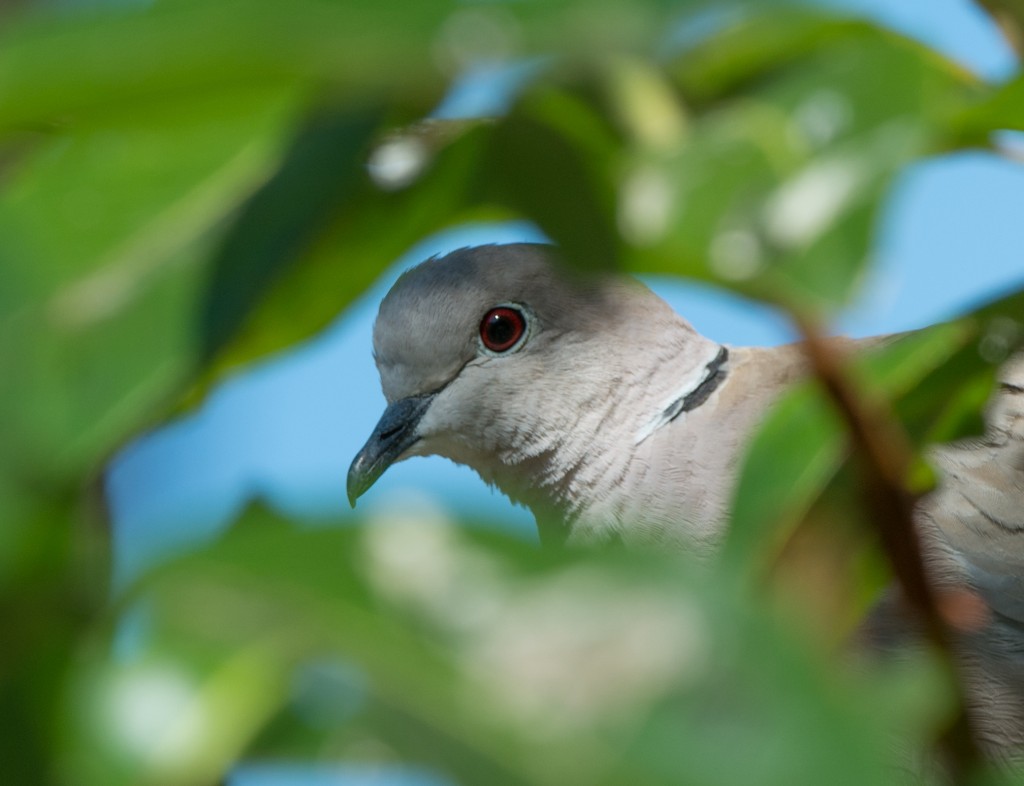
Eurasian Collared Dove
It finally flew down to the ground but in an area where I couldn’t observe it. However my patience finally paid off and it flew to the watercourse where I was able to obtain some photos before it flew from the yard. In processing the photos I was disappointed in the lack of detail. I think the camera has difficulty with subjects that don’t offer a lot of contrast (such as Brown creepers), and it’s easy to blow out the color on light-colored birds such as this dove and male American goldfinches.
I’ve noticed on several occasions that when the doves intend to fly out of the local area they rise almost vertically until they get well above the treetops at which point they transition into horizontal flight. If I can get my wits about me it means that I might be able to get photos of one in flight.
Next up was a male Wilson’s warbler, the second sighting in about a week but with an absence of probably about two months previous to that. I first noticed it when it flew onto one of the hummingbird feeders and spent considerable time traveling around the top of it. I usually don’t take photos of birds on feeders but I felt that this was an exception due to the unusual behavior.
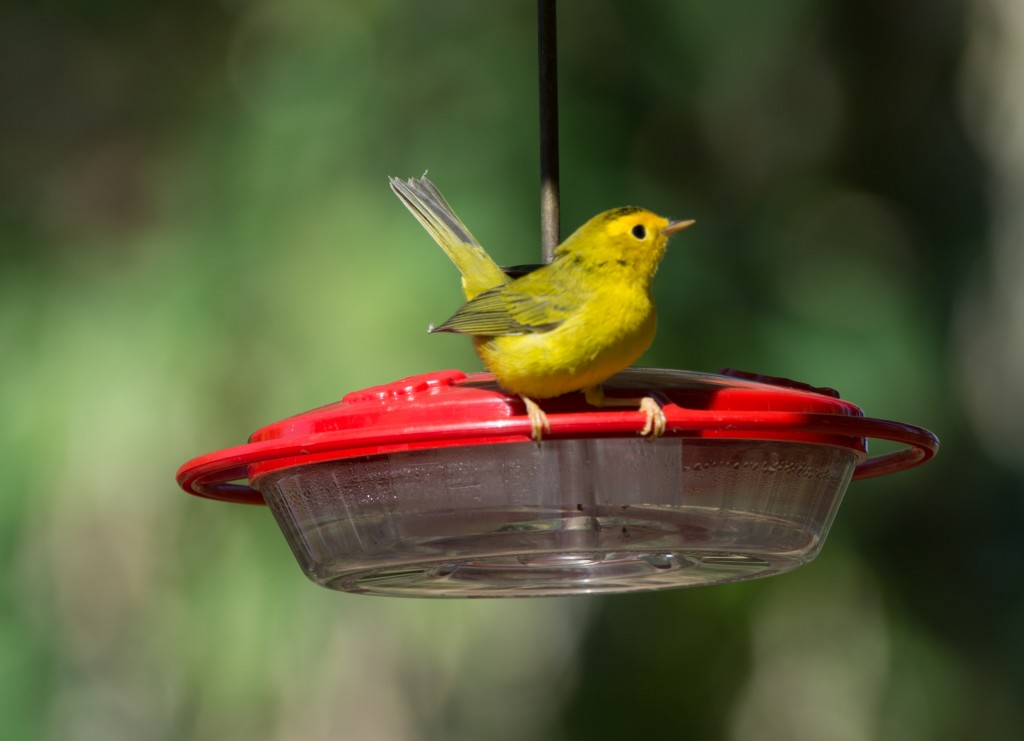
Frustrated Male Wilson’s Warbler on Hummingbird Feeder
The warbler flew out of the yard after making an abortive pass or two over the watercourse. It finally landed on another bird bath but the bath is only about 10-12′ from where I sit and too close for my lens to focus. The bird finally flew out of the yard but returned very briefly about ten minutes later.
Next up was a Spotted towhee that briefly entered the watercourse and allowed me to obtain photos… perhaps I should say one good photo.
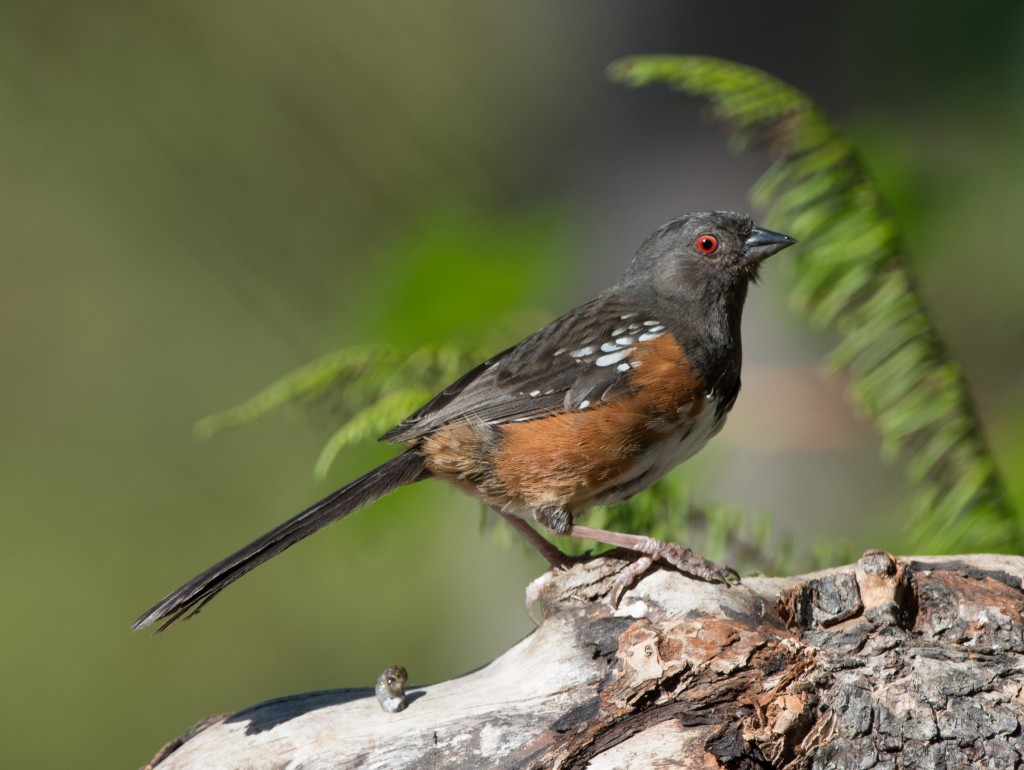
Spotted Towhee
Shortly after that observation a juvenile Spotted towhee, which has been hanging around the yard lately, accessed a different bird bath which allowed me to obtain photos.
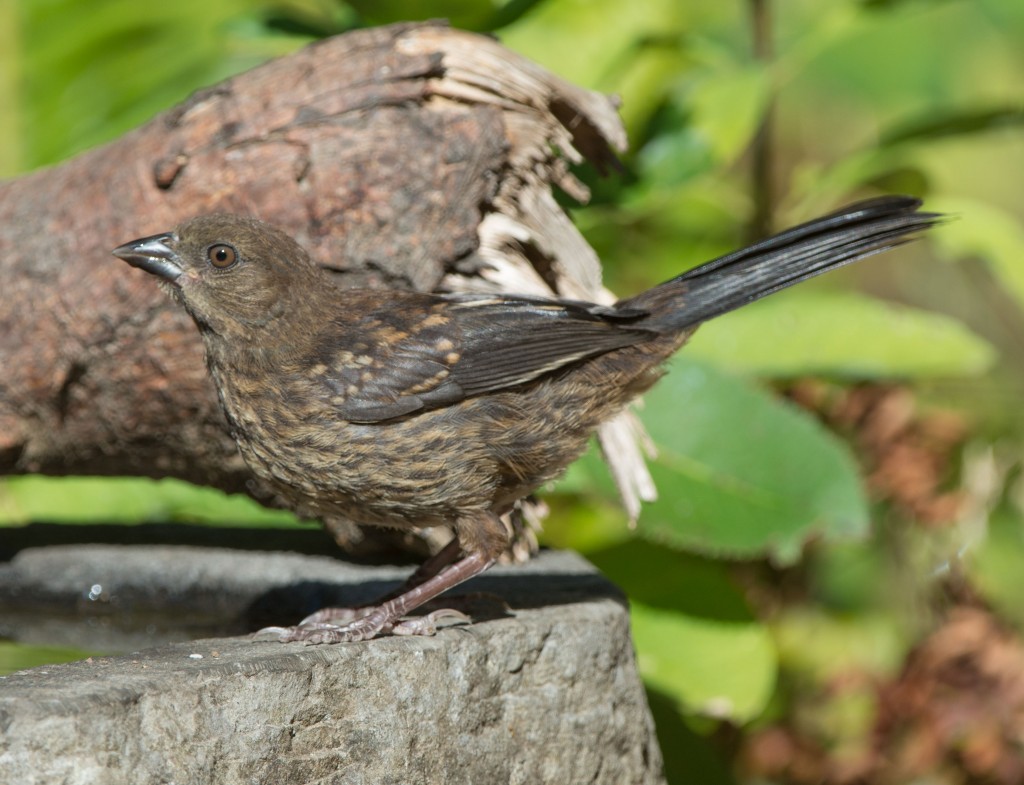
Juvenile Spotted Towhee
Despite having one or more broods of towhees raised in the immediate area each year, I’ve never observed a parent feeding one of the youngsters or even one of the youngsters accompanying an adult or begging for food.
All of the foregoing observations occurred in the time frame of about twenty minutes, and another hour of monitoring the yard didn’t yield much else.
However, perhaps my most interesting photo of the day was that of a butterfly which briefly landed on our Pacific yew tree. Can anyone out there ID this butterfly for me?
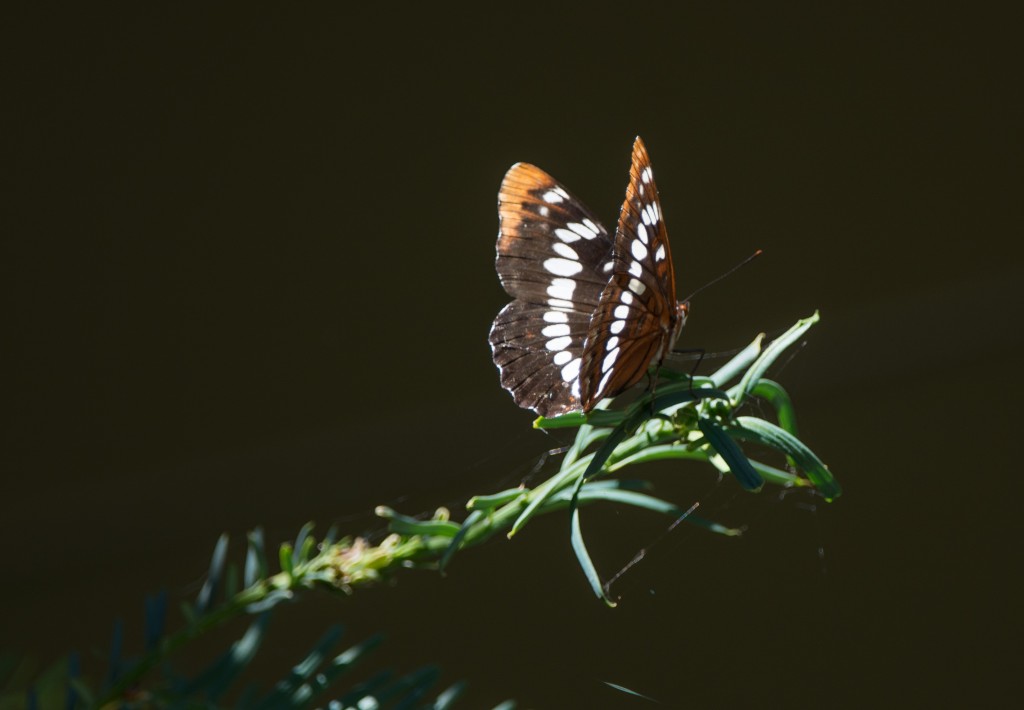
Unidentified Butterfly

